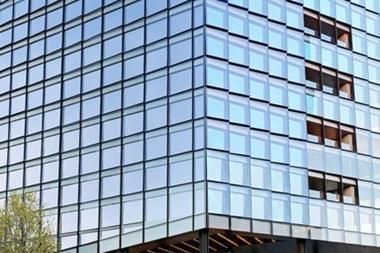It’s no secret that the office market is experiencing a revolution. Between economic challenges, the repercussions of the pandemic and employees adjusting to their newfound flexibility, leaders are figuring out how to put their best foot forward for their business and bottom line.

Decision-makers are reviewing their real estate portfolio and downsizing office footprints as flexible work models take shape. The vast majority realise that traditional, outdated headquarters no longer cut it. In their place are high-quality, tech-enabled office spaces in sought-after locations that support in-person office experiences.
With hybrid working here to stay, demand for traditional office space is slowing. Employees have adjusted to remote-work set-ups, and office visits have become opportunities to collaborate with colleagues or complete heads-down focused tasks that cannot be completed at home.
Talent is also driving a shift to ‘eco-friendly’ workspaces. This is particularly the case with Gen-Z workers who are opting for flexible, multipurpose spaces that provide opportunities for networking and meet emerging ESG criteria. This effort has been propelled by regulatory agencies pushing for higher efficiency standards in the UK and on a global scale.
Landlords, occupiers and operators now have no choice but to ensure that they are meeting expectations from both parties.
While there has been a chorus of requests from large companies for employees to return to their desks either full-time or for the majority of the working week, workers clearly aren’t willing to return unless the space is energising, suited to their work style and needs, and provides opportunities they don’t get working from home. In other words, employers must provide workspace that ‘earns the commute’.
Destination workplaces that offer best-in-class space pillared by tech-enabled services, first-class amenities and thoughtful design that blurs the line between ‘corporate’ and hospitality are now emerging on the scene. We saw All Access bookings increase by 56% across our top-three assets in London last year from January to November. For workspace to be worthwhile, pantries, gyms, cafés, in-person events, conference rooms and study areas are becoming the bare minimum.
Employers must provide workspace that ‘earns the commute’.
And while there has been a lot of speculation about a shift to the suburbs, central and sought-after locations accessible via well-connected public transport links have become table stakes for any business navigating its return to the office. All Access bookings for WeWork locations on the Elizabeth Line have increased by 28% in total since its opening.
This year – and potentially for decades to come – flexible working, the workforce and environmental standards will dictate the criteria of the modern workplace. What’s certain is that older office buildings will become obsolete, and new, state-of-the-art spaces will trump the office market.
As London maintains its importance as an office location for global companies, it’s not surprising to see that landmark skyscrapers with top-tier amenities are in the works in central hubs across the capital. Employee experience and in-person opportunities must remain a top-of-mind focus for leaders as they map their return-to-office strategies and workspace footprint.
Peter Greenspan is global head of real estate at WeWork





























No comments yet